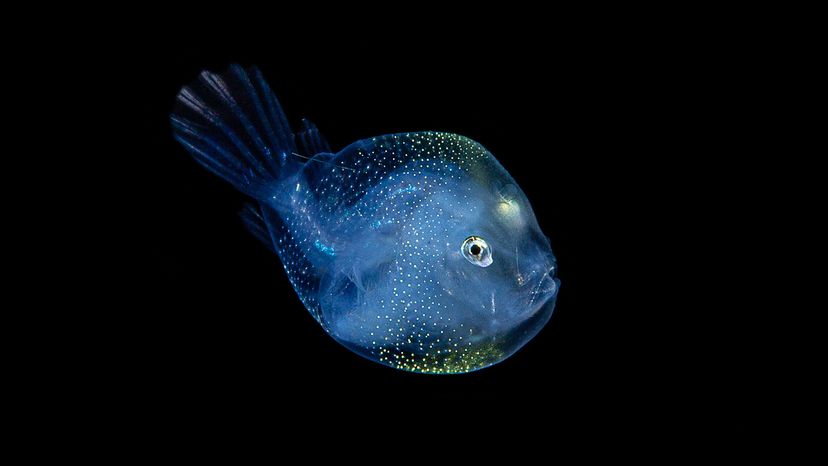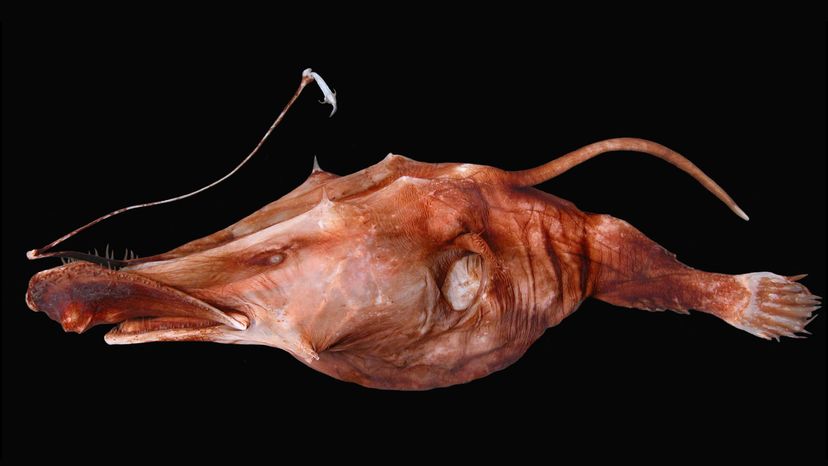Female anglerfish are definitely running the deep-sea show.
Pietsch says, "Most females aren't much larger than your fist, but other species (most notably the Certias species) are close to 4 feet (1.2 meters) long. A male anglerfish on the other hand is significantly smaller. Usually an inch (2.54 centimeters) or so long. In the most extreme cases, the larger females are 60 times the length and about half a million times as heavy as the male."
The male, who has no way to feed itself, must rely completely on the female for survival. "They (the males) have tiny, pincher-like teeth on the tip of their snout, and they bite on to the female," says Pietsch. Afterward, the two actually merge and become one in a symbiotic relationship.
Strange Breeding Behavior
But it's not because they're in love. "The blood flows from the female to the male provides the nutrients. If they don't find a female, they're toast," says Pietsch. Scientists believe the female emits alluring pheromones that the male can sniff out with his proportionately large nostrils.
Their mating ritual really is quite unique, Pietsch says. "These are the only animals in the world that attach permanently to mates and exchange fluid."
Some species of deep sea anglerfish mate for only a short time, during which the male will drink blood from the female and pump sperm into her body, and detach once reproduction is complete. Other anglerfish species mate permanently: The male's head "melts" into the skin of the female and it gives its life entirely, becoming little more than a nub along the larger angler fish's body.
Scientists note that the size difference is a survival mechanism that allows them to thrive on the limited deep sea menu. If they were both large, it would take a whole lot more food and energy to keep them alive and their unique reproductive cycle going. By staying tiny, the male is able to pass on its genes without expending energy which would be required to hunt for prey.
These creepy-looking deep sea dwellers take sexual parasitism to a whole new level.
While the female has to carry the little guy around and keep feeding him, she's also getting a pretty good deal out of it too. There's no need to put herself out there to attract a loyal partner — she's got a sperm bank (or two or three or even six) available 24/7.
Even though the male is small, he's always got his testes ready and available to fertilize her eggs.
Anglerfish Spawning
Once fertilized, the female anglerfish is able to produce hundreds of thousands of eggs, which bundle together in strings and float their way up to the surface of the water. A huge amount of eggs is necessary because anglerfish do not look after their young, and the larvae will be vulnerable to predators all through the incubation process.
Once hatched, the tiny deep sea anglerfish immediately begin their journey down into the ocean's depths.


